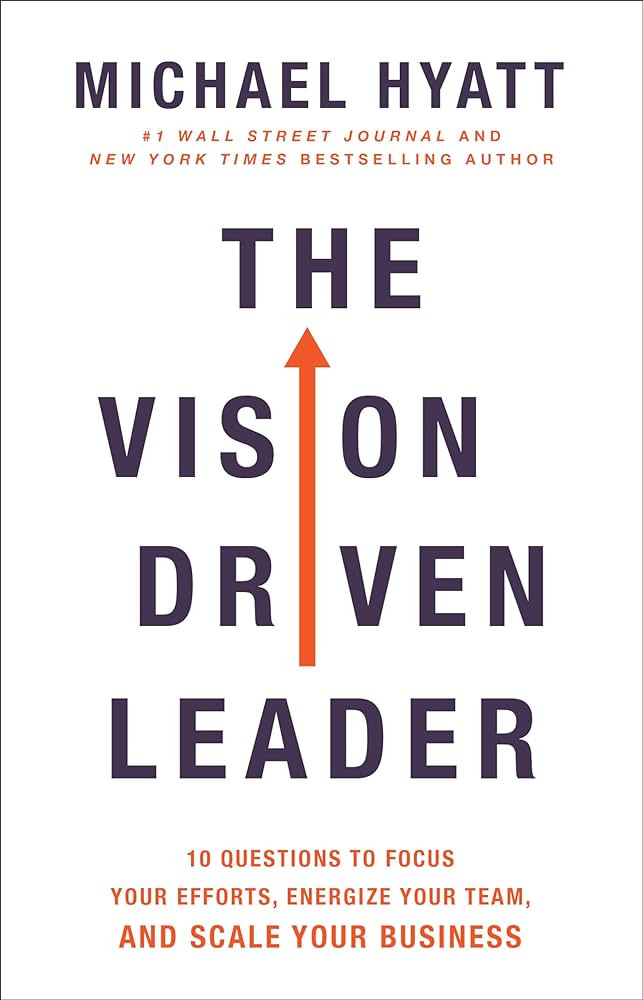
Review
There are better strategy books. This book is best thought of as an introduction to strategy through the narrow lens of a creating a vision. If you’re really interested in improving your strategy skills, you’ll need to read something else.
Key Takeaways
The 20% that gave me 80% of the value:
- If your vision is compelling enough, people will apply their best thinking and efforts to figuring it out. They’ll find a way to overcome obstacles and opposition.
- Without a vision, influence fades. A vision creates a reason for people to follow you.
- A vision is something that hasn’t happened yet, but could happen.
- A vision is the difference between a leader and a manager:
| Leaders | Managers |
|---|---|
| Create the vision | Execute a vision |
| Inspire and motivate | Maintain and administer |
| Take risks | Control risk |
| Focus on the horizon | Focus on short-term objectives |
- Good business leaders create a vision, articulate the vision, passionately own the vision, and relentlessly drive it to completion
- A vision should be:
- Clear
- Inspiring
- Practical
- Attractive
- 3-5 years off
- A good vision helps drive day to day decision making
- A good leader makes a vision their first priority.
- 6 pitfalls of not having a strong vision
- Unpreparedness for the future
- Missed opportunities
- Scattered priorities
- Strategic missteps
- Wasted money, time and talent
- Premature exits
- Ford. A good example of a vision:
“A car for every household… so low in price no man making a good salary would be unable to own one and enjoy with his family in gods greets open spaces”
- You are more likely to get to a destination you like if you’re intentional about where you’re heading
- A mission provides day to day clarity by defining the identity and scope of the business
- A good mission answers:
- Who are we?
- Who do we serve?
- What problem do we solve?
- What transformation do we deliver?
- They define your identity, your clientele, and your answer to your customers challenges
- A good mission answers:
| Mission | Vision |
|---|---|
| What a business is | Where a business is going |
| Now | Next |
| What | Where |
| Here | Out there |
| Now | Next |
| Brief | Robust |
- Effective mission statements are: focused, memorable and short (2 sentences)
- Writing your own
- Get away and clear your head
- Believe the best is yet to come
- Imagine tomorrow and describe what you see
- Vision requires clarity: Make it concrete, explicit and clear.
- Shouldn’t be abstract or implicit
- Steps to clarity: Admit you’re unclear, recognize your blinders, ask for input, process the feedback, just start!
- For a vision to be successful it must inspire motivation to take action
- Make your vision inspirational:
- Focus on creating something new, think big, think risky but realistic. Exclude the how, just include the what.
- Vision is about where you’re going, and strategy is the path you’re going to take
- Vision should come first: there’s no path without a destination
- Without a path, there’s no progress
- Mission: who you are
- Vision: where you are going
- Strategy: how you are going to get there
- Values: the kind of people you are along the way
- Strategy > Productivity
- Working long hours < working on the right thing
- There should be a through line from the vision to your daily ToDos
- Create an annual plan, that flows from you vision. Include what you’ll do this year to make progress on your vision (projects / initiatives [starting or stopping])
- Set 3 Quarterly Goals → Set Weekly Objectives → Daily Task
- The visibility problem: if your team doesn’t know the vision, they can’t realize it
- The big test of your vision is if you can sell it across the company
- to your team, leadership, rest of the company, outside the company
- When pitching the vision: commit to success, understand the customer, think through your presentation, anticipate objections, make the pitch
- Respect the past: State how they won last time. State what’s different
- There are no friction-free visions. The best face hardships, miscalculations and setbacks
- The three traits that beat resistance: tenacity, integrity, courage
- Business as usual produces predictable results.
- Consider updating the vision as you enter new stages: startup, rising, transitioning, mature, legacy, zombie, dead